Nantucket’s Compass Rose
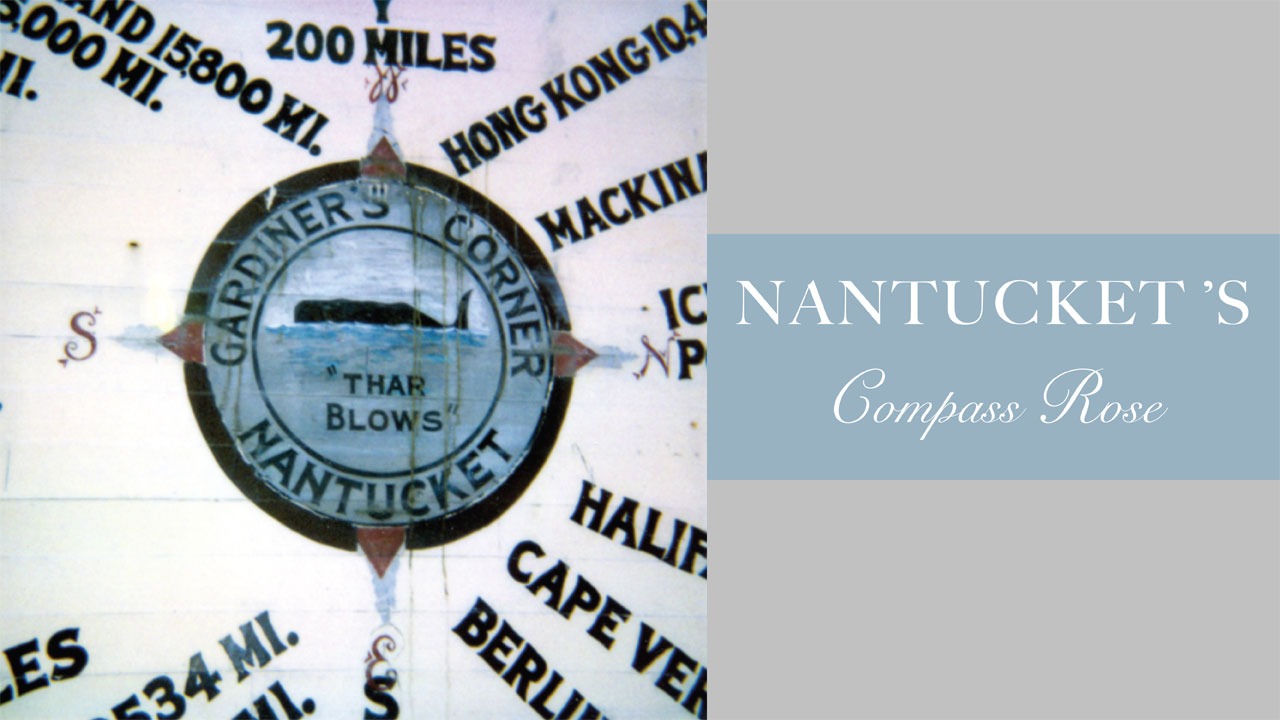
By Mijke Roggevee
photos courtesy of Nantucket Historical Association Collection
Visitors to Nantucket often pause at the corner of Main and Washington streets to get their bearings while trying to figure out how to get to ’Sconset or Surfside, and how far away they are. There they see a sign that tells them how far it is to Moscow and Mackinac and Madrid. It doesn’t help them in their immediate directional plans, but it often prompts discussion and a photograph.
The compass rose on the side of the building (Ralph Lauren) has attracted attention to Nantucket’s place in the world for about 75 years. It was created and put on the side of his store by H. Marshall Gardiner in the early 1930s, at a time when attention was needed to bring business not only into his own store, but to the Island itself.
H. Marshall Gardiner was a photographer. His hand-tinted photographs and postcards are still prized by collectors and hang in many homes. But Gardiner was not only an artist, he was also a businessman with a flair for promotion and publicity.
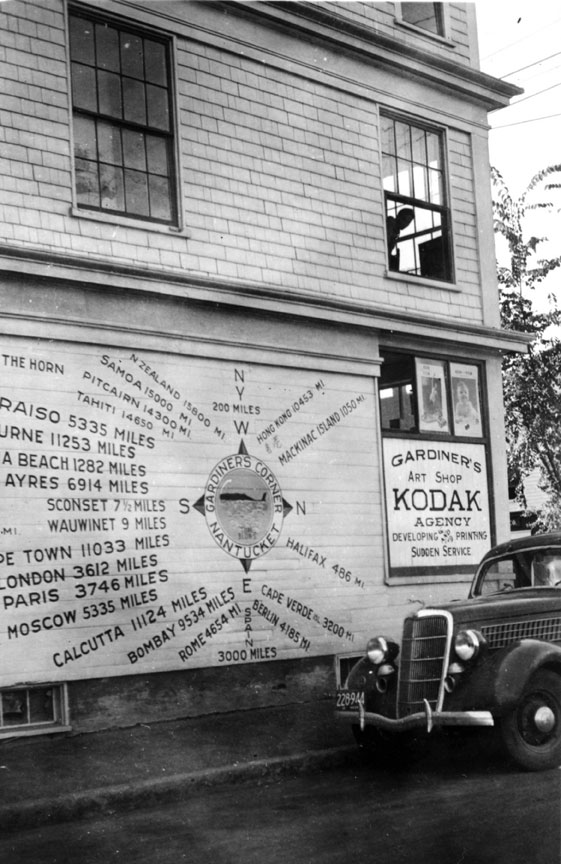
The compass rose, showing mileages around the world from Gardiner’s Corner, links Nantucket to its whaling past as well as to the larger world. The sign names important ports and “shows that Nantucket was in touch with other exotic spots in the world,” according to Milly Lou Gardiner Smith, Gardiner’s daughter. “It illustrates that Nantucket was not some little backwater,” said daughter Patty Gardiner Porterfield.
Indeed, Nantucket has long been linked to the larger outside world. In the days of whaling, Nantucket vessels were putting into ports such as Tahiti, Samoa and New Zealand. The whale oil brought back to Nantucket would travel on to light the lamps of London and the big cities of Europe. Nantucket vessels traveled to Hong Kong and Canton in the time of the China trade.
The compass rose shows these locales and just how far away and spread out over the globe they were. “Of course it’s all land and sea mileages,” said Milly Lou. “If people are thinking in terms of bird flight or airplane flight, they might get different numbers. Some people might think the mileages aren’t quite right, but it had nothing to do with air miles. It had to do with the way ships would have gone.”
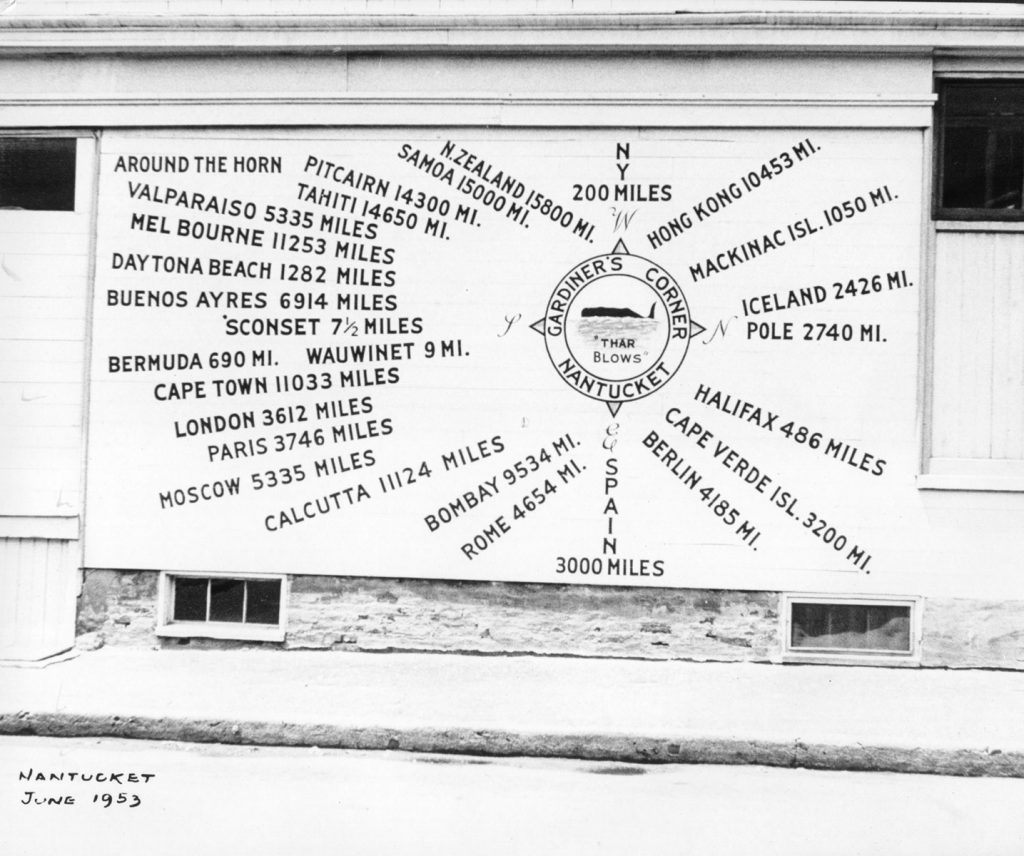
Compass Rose Sign, 1952 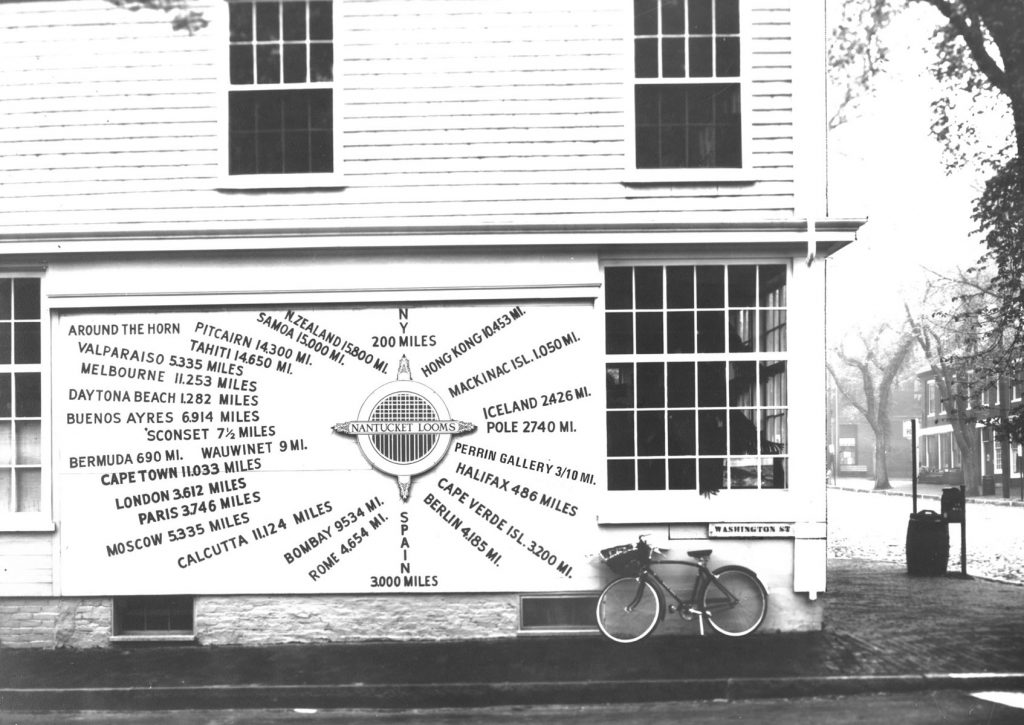
Compass Rose Sign by Robert Perrin, “Perrin Gallery”, circa 1950s 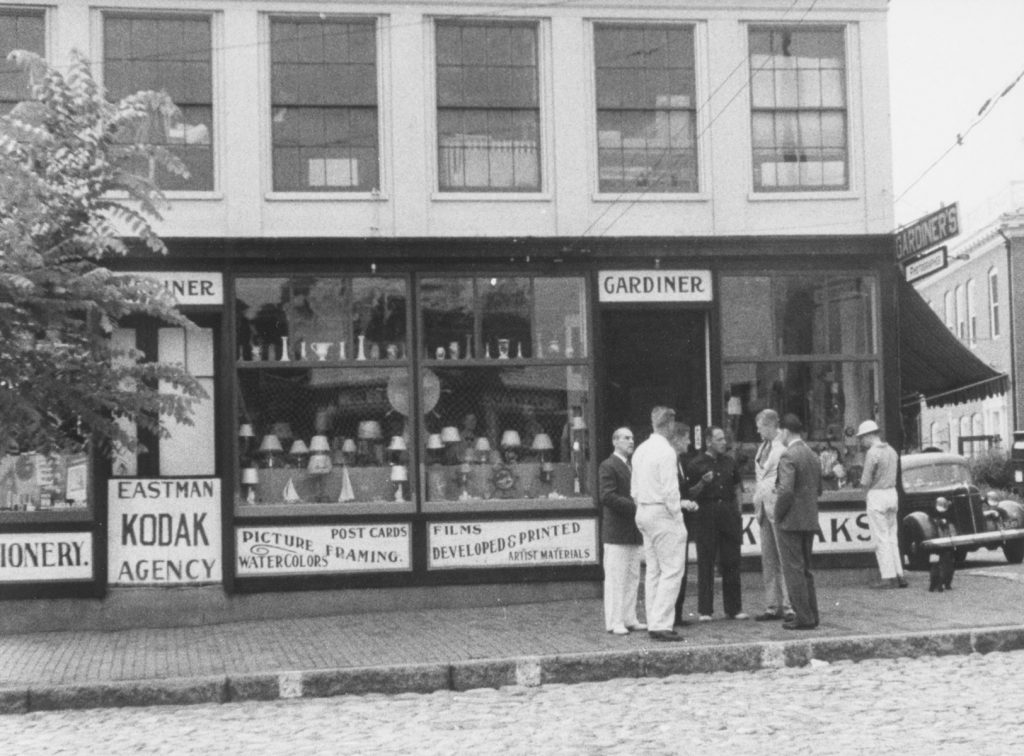
H. Marshall Gardiner’s Main Street Storefront, circa 1930s, (gift of Harvey Young)
Milly Lou knows well how the mileages were figured, because as the oldest of Gardiner’s three daughters, the task of figuring the distances fell mainly to her. Milly Lou was about eight or nine at the time and figured out many of the mileages at the library. “I’d use the atlas and encyclopedia and the big globe they had at the Atheneum,” said Milly Lou. “He’d say, ‘Figure that one out,’ and I’d have to figure it out by land and sea.”
Many locations were chosen from Gardiner’s conversations with Captain George Grant, first curator of the Whaling Museum. Grant was born in 1857, during a whaling voyage. His mother, Nancy Grant, traveled with her husband, Charles, and gave birth to all her children at ports in the Pacific during whaling voyages. George Grant harpooned his first whale at age 16 and continued in the whaling business into his thirties. Later, as curator of the Whaling Museum, he was a wonderful source of information about Nantucket’s whaling past. He and Gardiner engaged in frequent conversation.
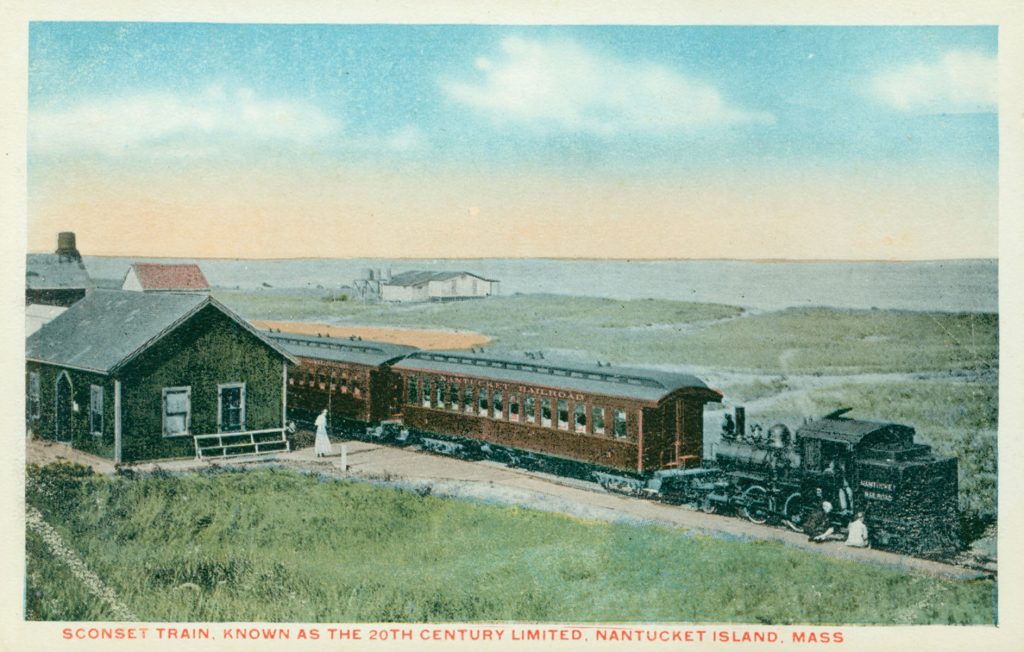
’Sconset Train, known as the 20th Century Limited, circa 1910s 
Sankaty Head Golf Club, Siasconset, circa 1920s, H. Marshall Gardiner 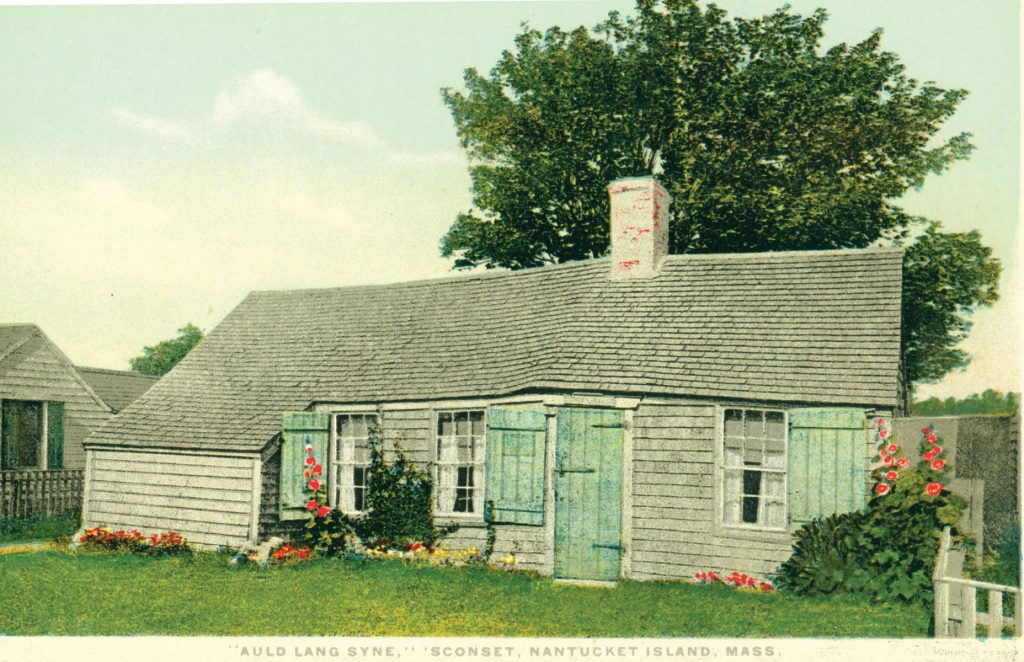
“Auld Lang Syne,” Siasconset, circa 1910s, H. Marshall Gardiner, (gift of Don and Marry Warren Moffett) 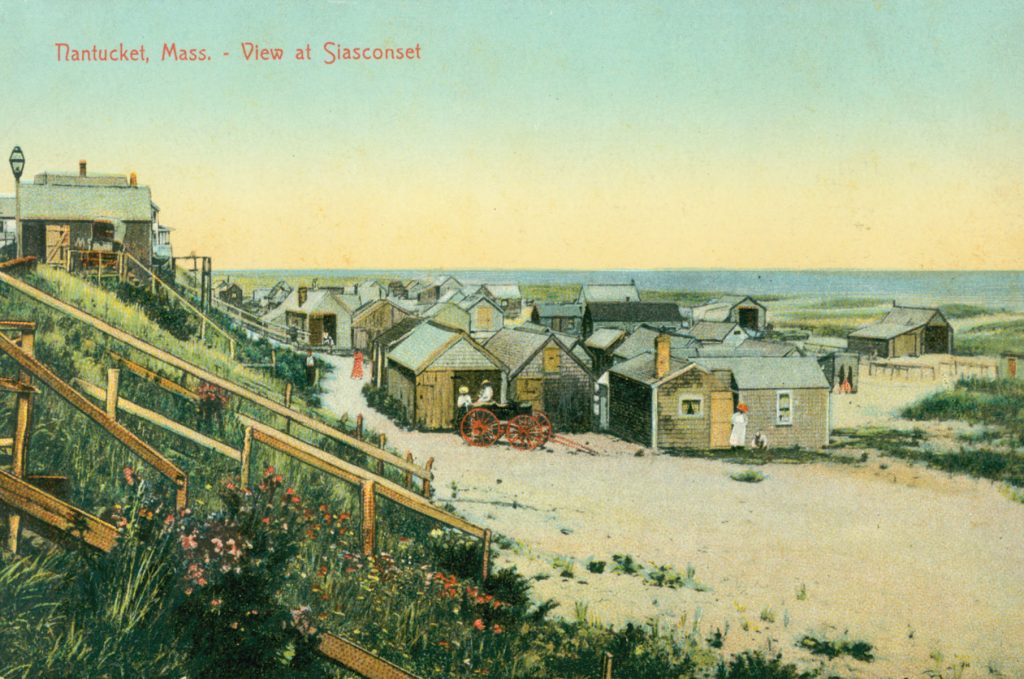
Codfish Park, Siasconset, circa 1920s 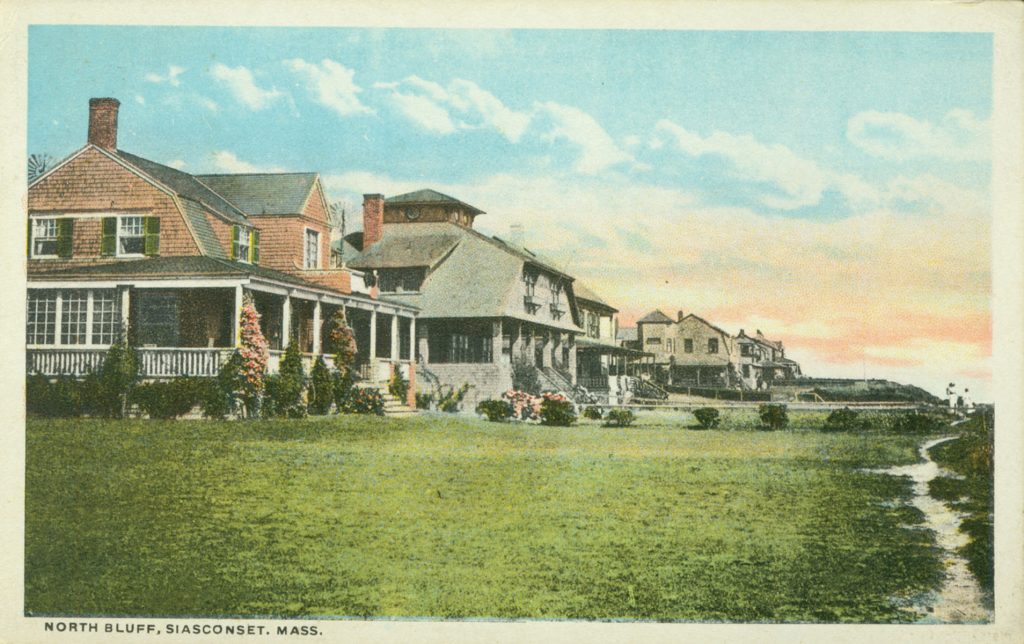
North Bluff, Siasconset 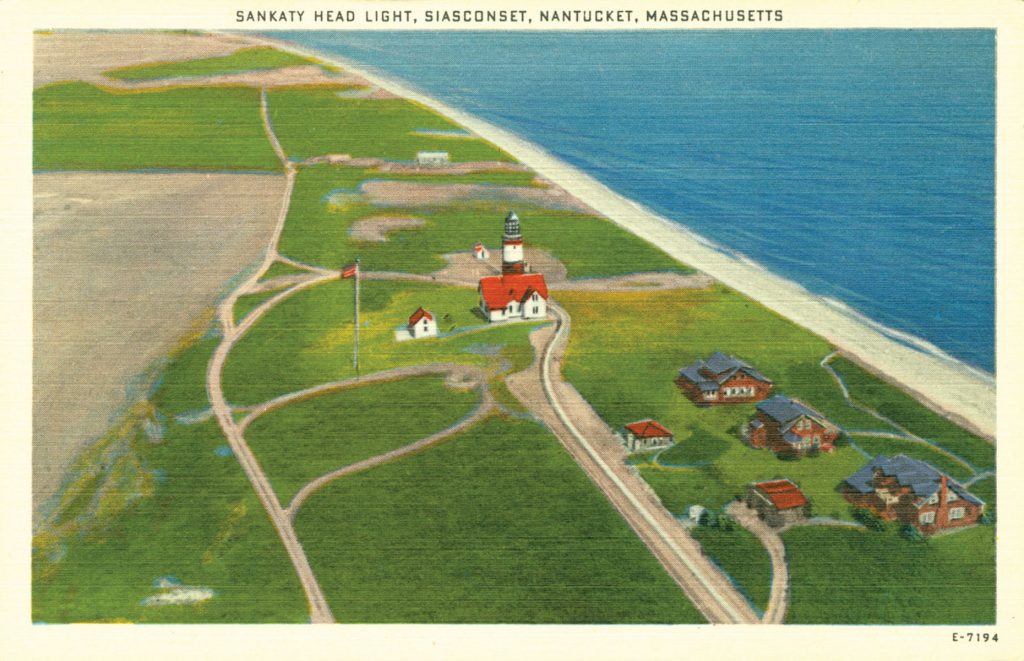
Sankaty Head Light, Siasconset American Art Postcard Co. 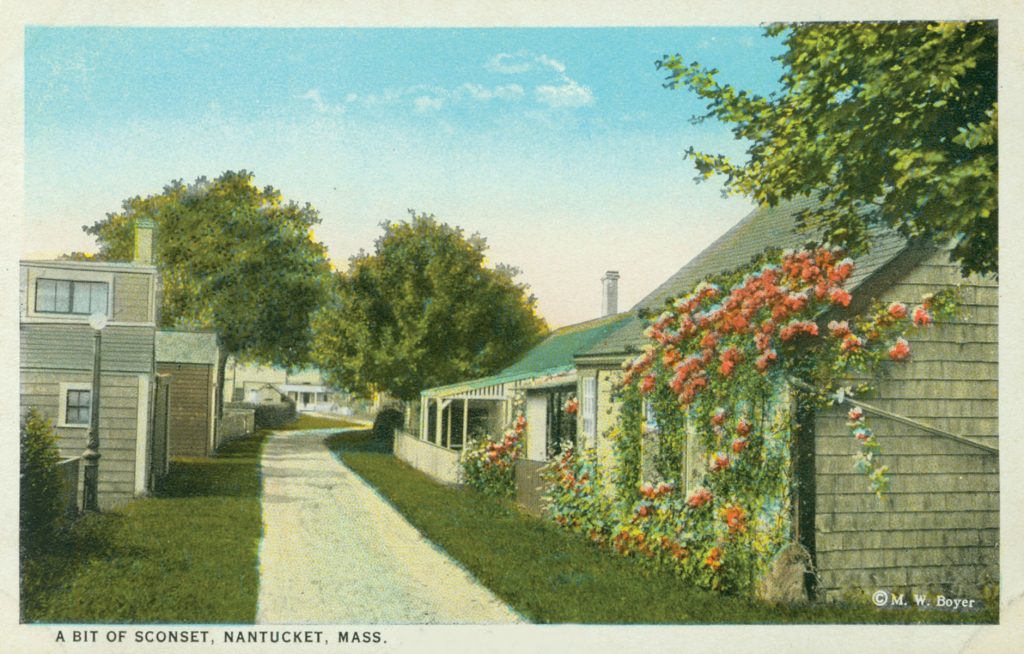
A bit of Siasconset 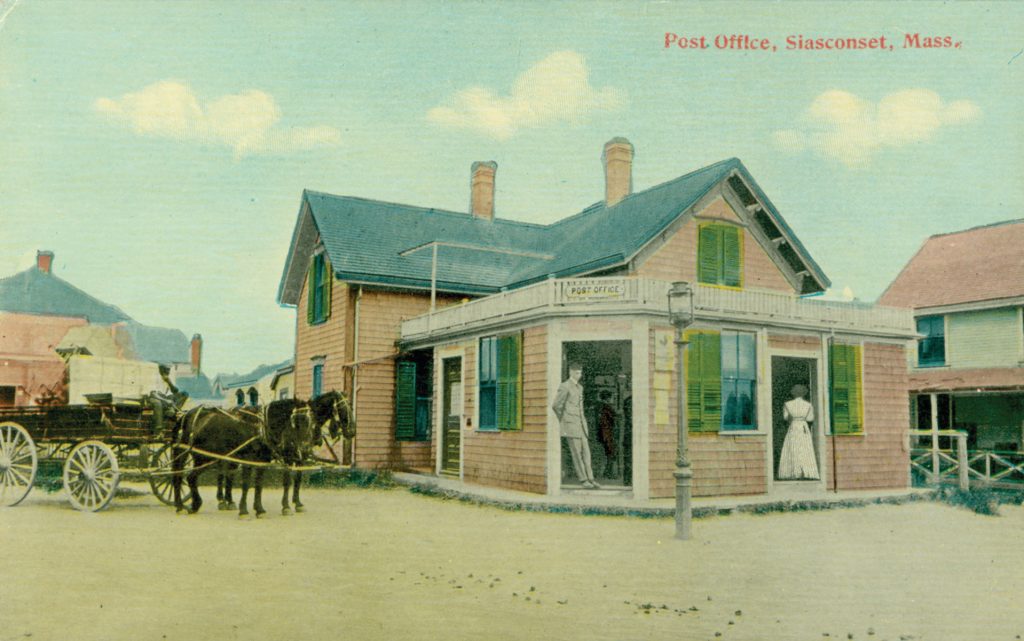
Post Office, Siasconset, circa1890s
After choosing his locations and computing the distances, Gardiner hired Walter Ayers to paint the sign on the side of his store. The misspelling of “Buenos Ayres” was an intentional variation of the painter’s family name.
Gardiner’s store stayed in the family until the 1960s, when it was sold to the Nantucket Historical Trust. For many years, the center of the sign was covered with a circular wooden plaque that read “Nantucket Looms,” the building’s new tenant. But when Nantucket Looms moved to another part of town, the plaque was removed, displaying once again Gardiner’s whale, swimming right where every islander knows Nantucket is: in the middle of it all. A unique corner of the world–tiny in size, but connected in all directions to the world around it.
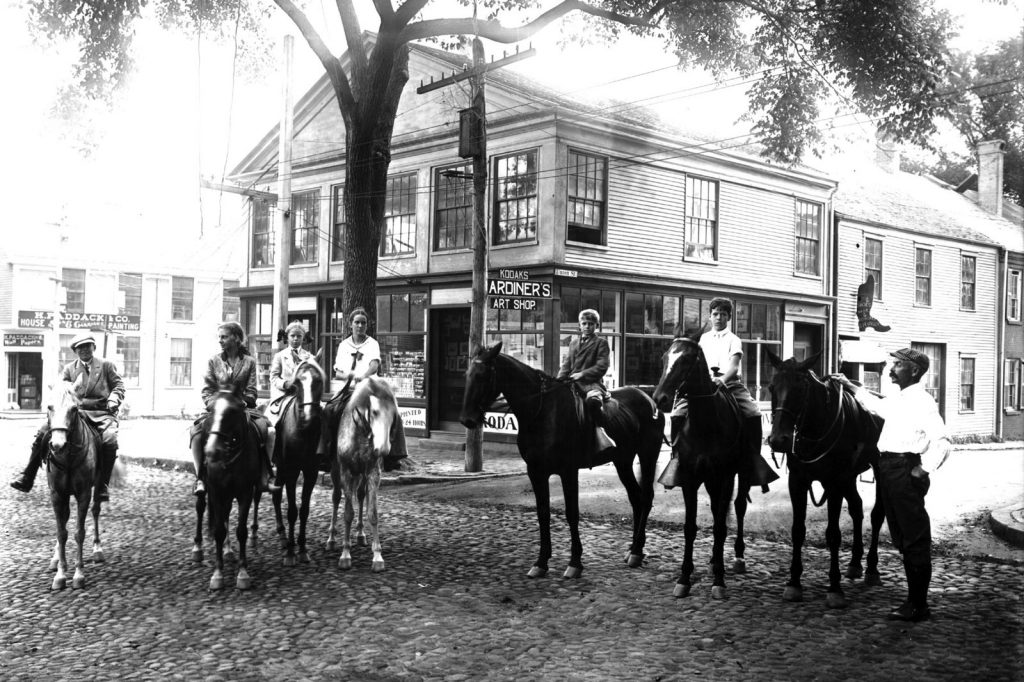
The NHA and Ralph Lauren partnered in the restoration of the Gardiner’s Corner compass rose mural.
Article edited. Full version available in NOW NANTUCKET GUIDE 2018.

